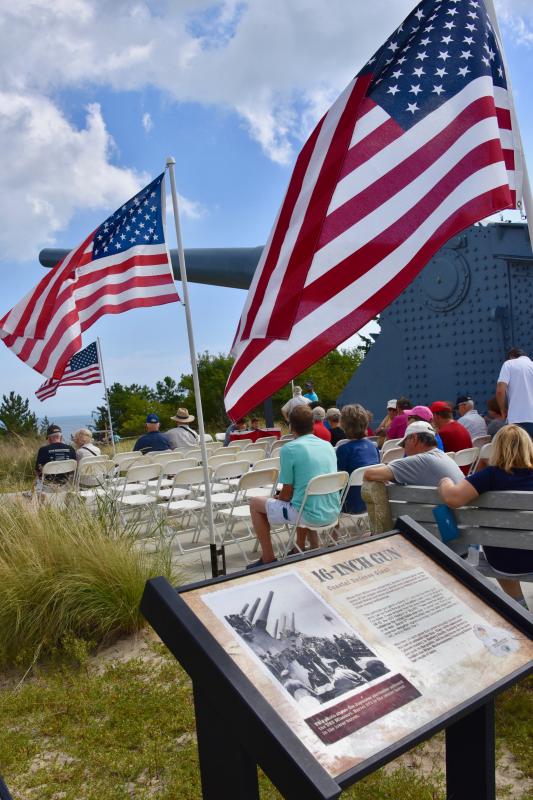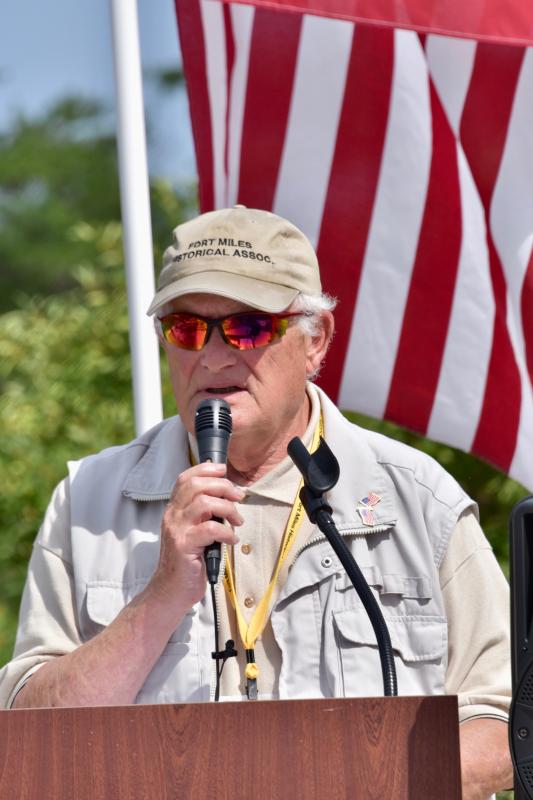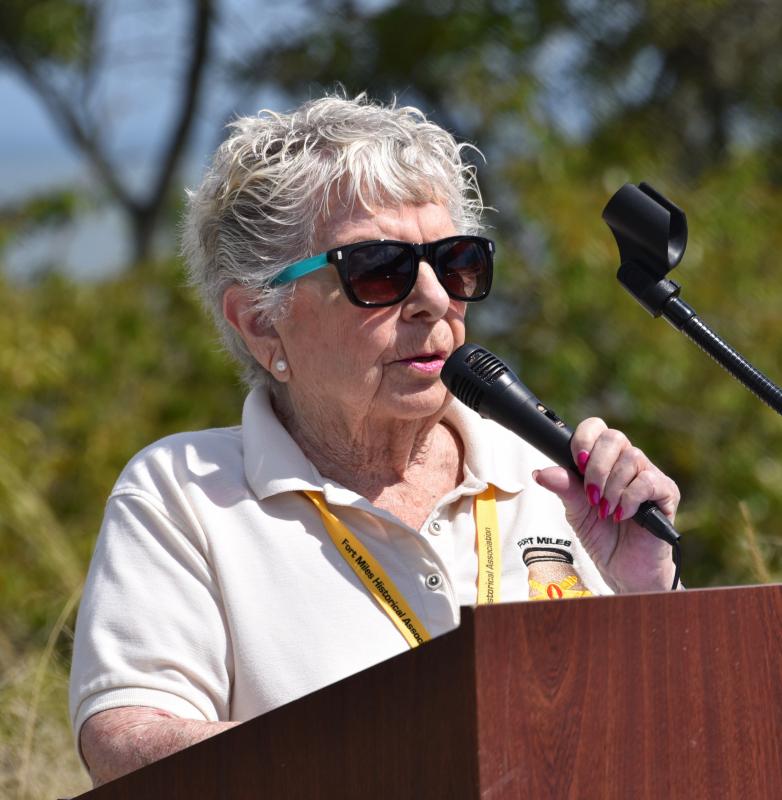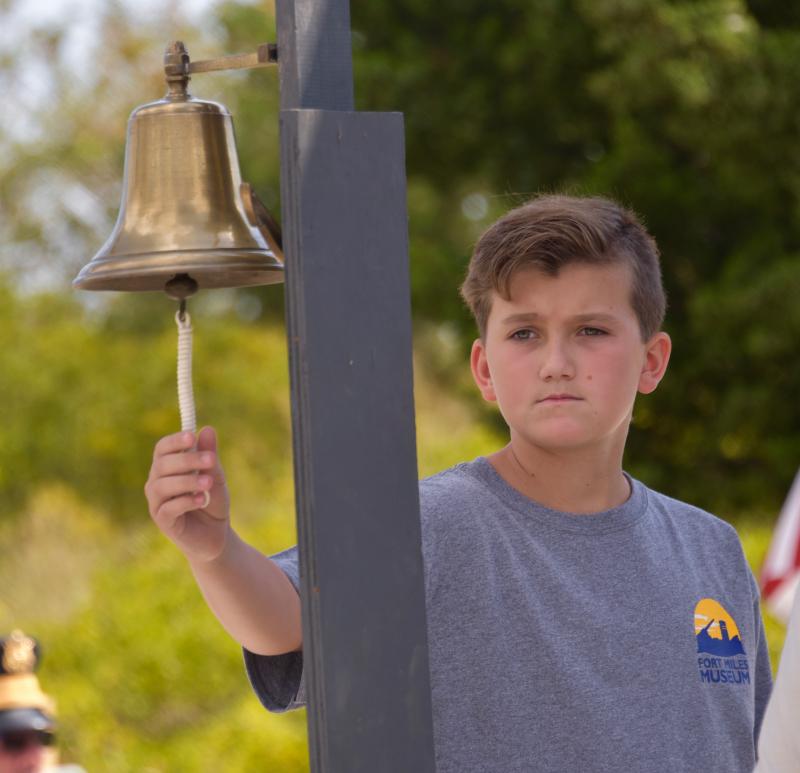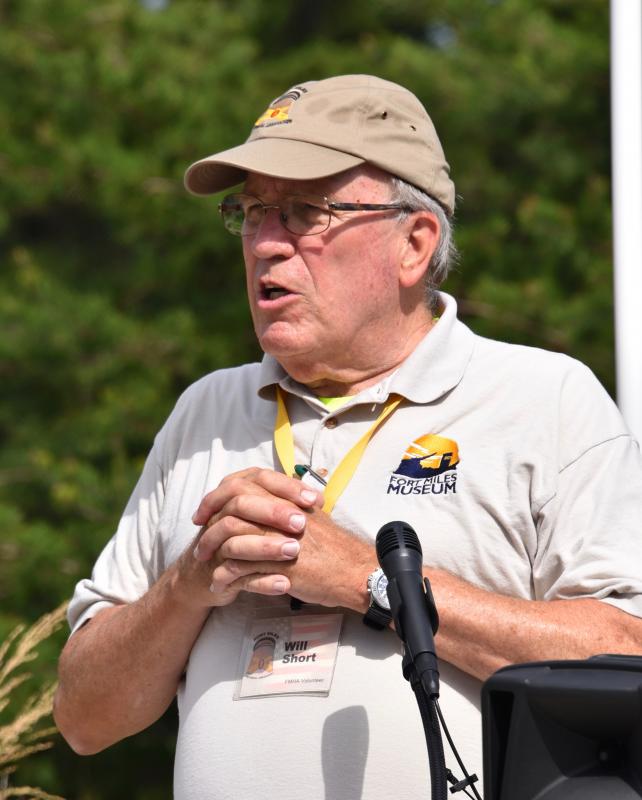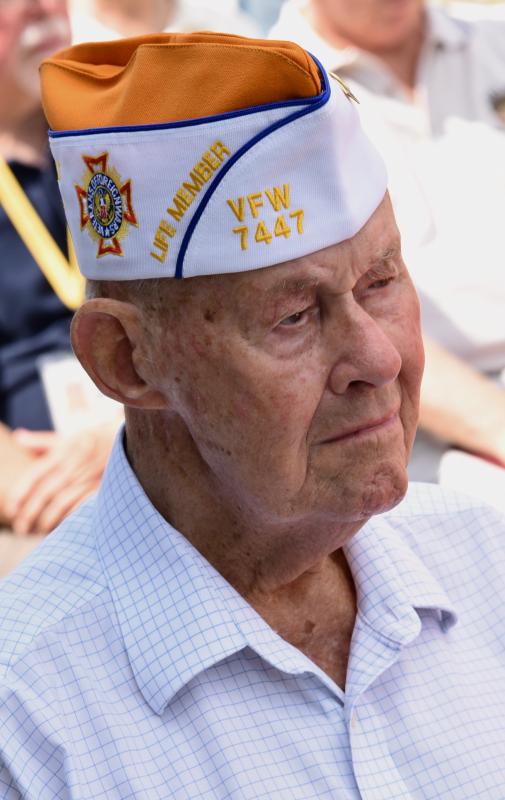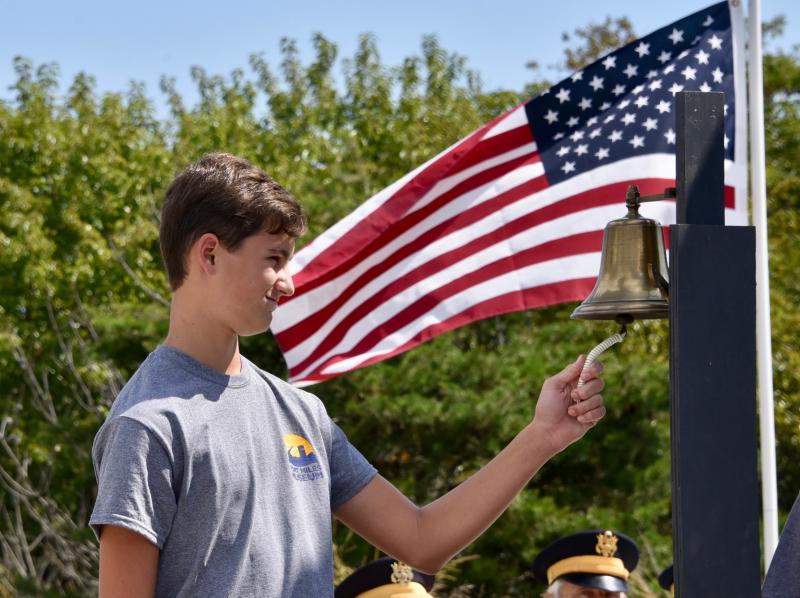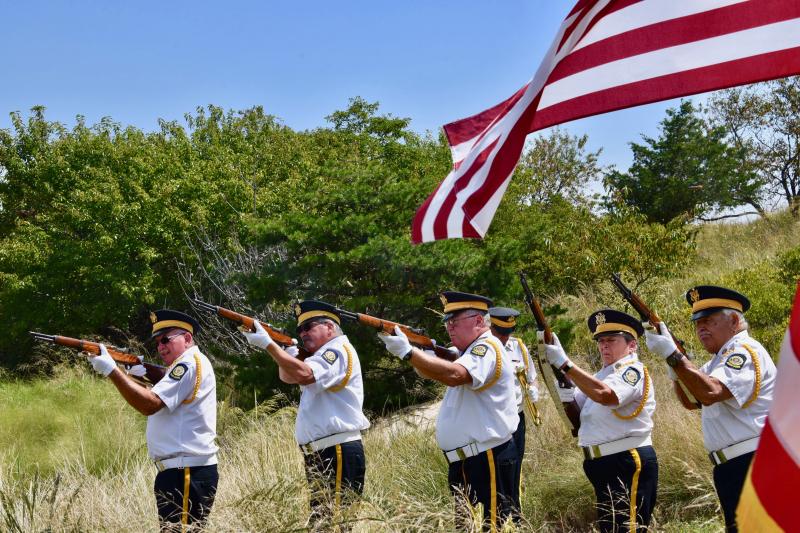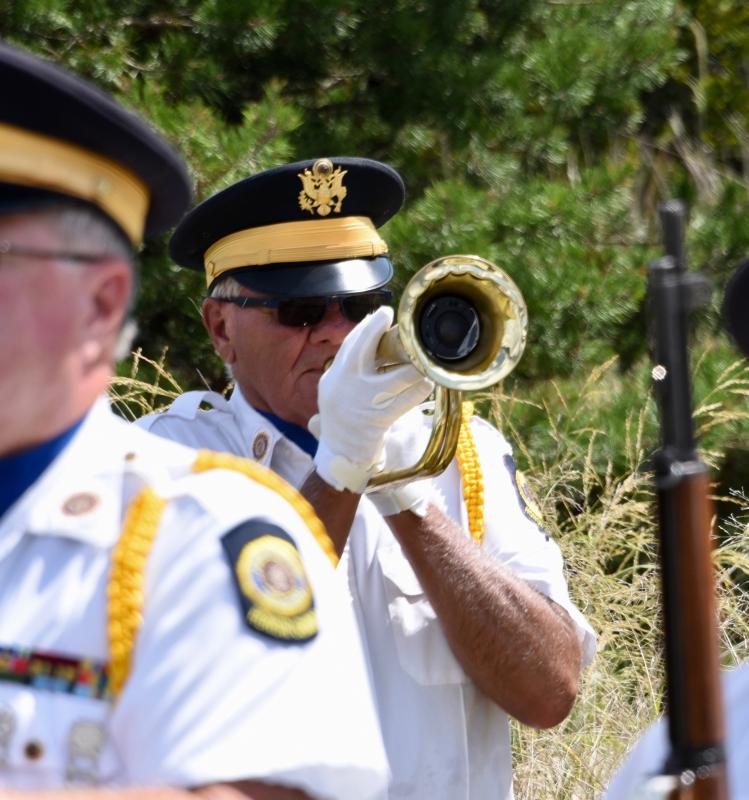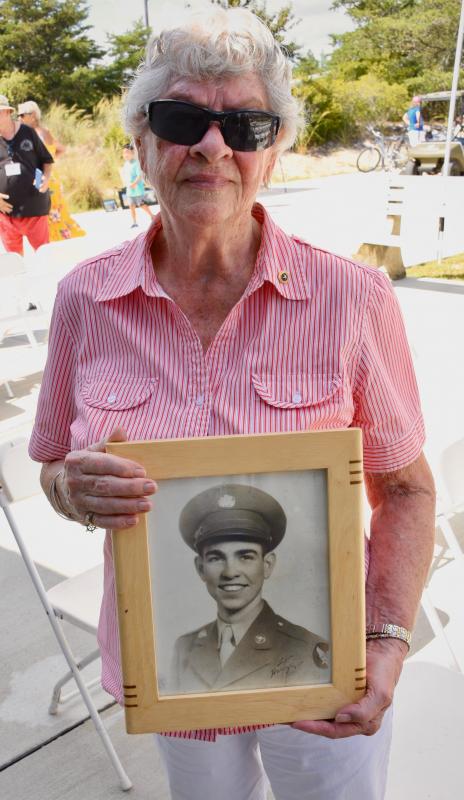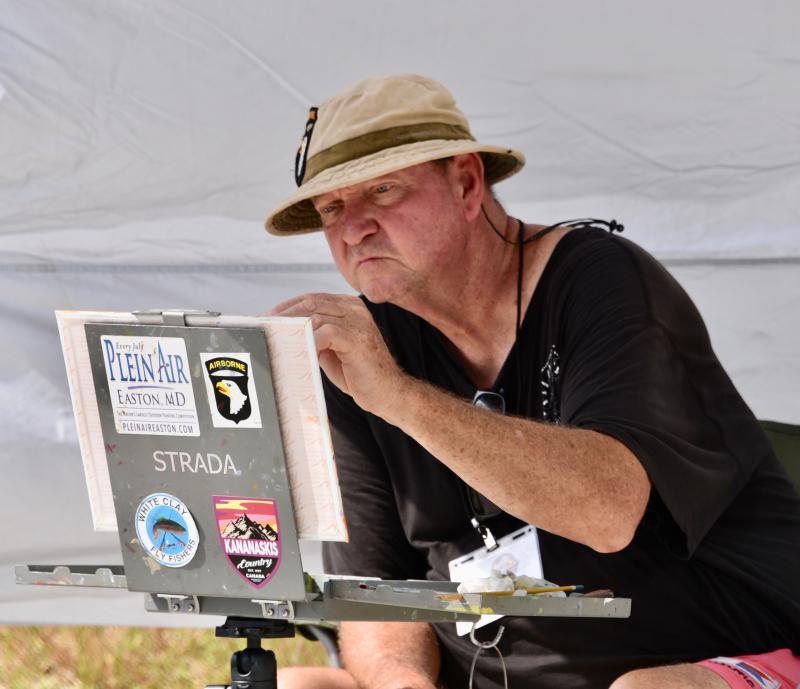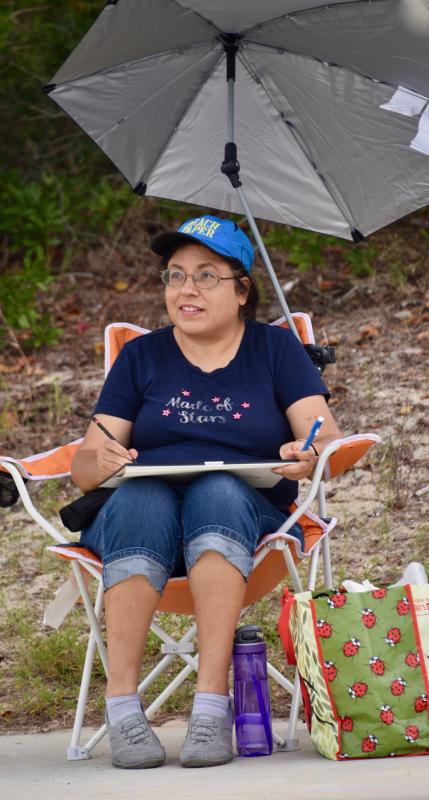Fort Miles Historical Association honors fallen Delawareans
Gary Wray, president of the Fort Miles Historical Association, said there are three places where a true Victory Over Japan (V-J) ceremony could take place: Fort Miles in Cape Henlopen State Park in Lewes at the USS Missouri gun barrel display; Pearl Harbor, Hawaii, where the USS Arizona and USS Missouri are located; and Phoenix, Ariz., where a 14-inch Arizona gun barrel is on display.
The historic gun barrels mark the beginning and end of World War II. The USS Arizona was sunk, with the loss of 1,102 sailors and Marines, on Dec. 7, 1941, to start the war. The USS Missouri was the battleship where the Japanese surrendered Sept. 2, 1945, to end the war.
The association uses the annual V-J ceremony to pay tribute to Delawareans who served in the war, and especially to memorialize the 774 men and women who were killed.
“How fitting this ceremony is in the shadow of the 16-inch barrel off the USS Missouri, which was there during the surrender ceremony. That makes this extra special,” said Will Short, association volunteer and emcee.
Wray and other volunteers located USS Missouri gun barrels destined for scrap in Dahlgren, Va., at the U.S. Navy Support Facility. Reaching an agreement with the Navy to donate the barrel, the association mounted a large fundraising campaign to transport the barrel to Fort Miles.
The 66-foot Missouri gun barrel arrived in Lewes with much fanfare in April 2012 via a rail barge across the Chesapeake Bay and then on the Delaware Coast Line Railroad to Georgetown and Lewes. Fort Miles had a pair of similar 16-inch guns in bunkers, but both were removed after the war.
Fort Miles Bunker Busters, with the help of local contractors, restored the barrel.
Each year, volunteers read 100 names of those who made the ultimate sacrifice. Students Nicholas and Christian Schimmel rang a bell – on loan from Lewes World War II veteran Rudy Swanson – after each name.
Among the names read this year was Minos Conaway, who has a road named in his honor. Conaway, whose has family roots in the Nassau area dating back to the 1700s, was killed in action in France on Aug. 15, 1944.
The number of locations where veterans died was varied including Italy, France, Iwo Jima, New Guinea, Belgium, Okinawa, Luxembourg, Mediterranean Sea, Holland, China, Tunisia, Germany and the Philippines. Many died in the line of duty away from the action in several states including Delaware, California, Massachusetts, North Carolina, Idaho and Tennessee.
Wray said the surrender ceremony was brief, with Gen. Douglas MacArthur making a short but profound speech, which Wray read. “He talked about peace and pointed to the future to bring people together,” he said. “The key part was not the ceremony but the 7-hour flyover over Tokyo of every plane off every ship in the harbor. The Japanese were stunned as it darkened the sky over Tokyo.”
Wray said the Fort Miles Museum will have a piece of the USS Arizona next year to display near the USS Missouri barrel symbolizing the beginning and end of the war.
Fort Miles protected Atlantic coast
Fort Miles was the largest East Coast combat-ready post during World War II, with 2,500 personnel trained to protect the coast and the entrance to the Delaware Bay and Delaware River. Fort Miles had 32 of the Army's largest-caliber artillery pieces plus anti-aircraft weapons. It continued to serve in military capacities for another three decades until more than 540 acres of the area were returned to the state of Delaware, forming the heart of Cape Henlopen State Park.

